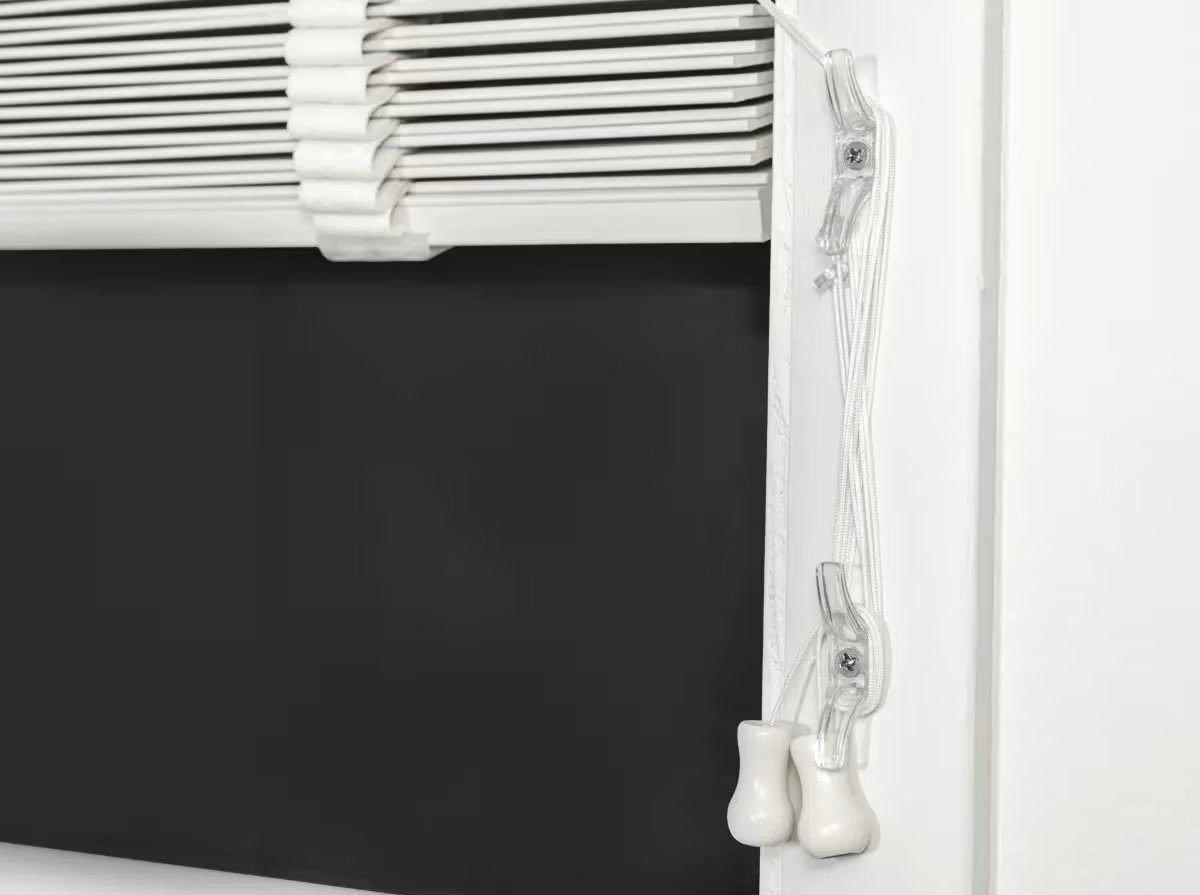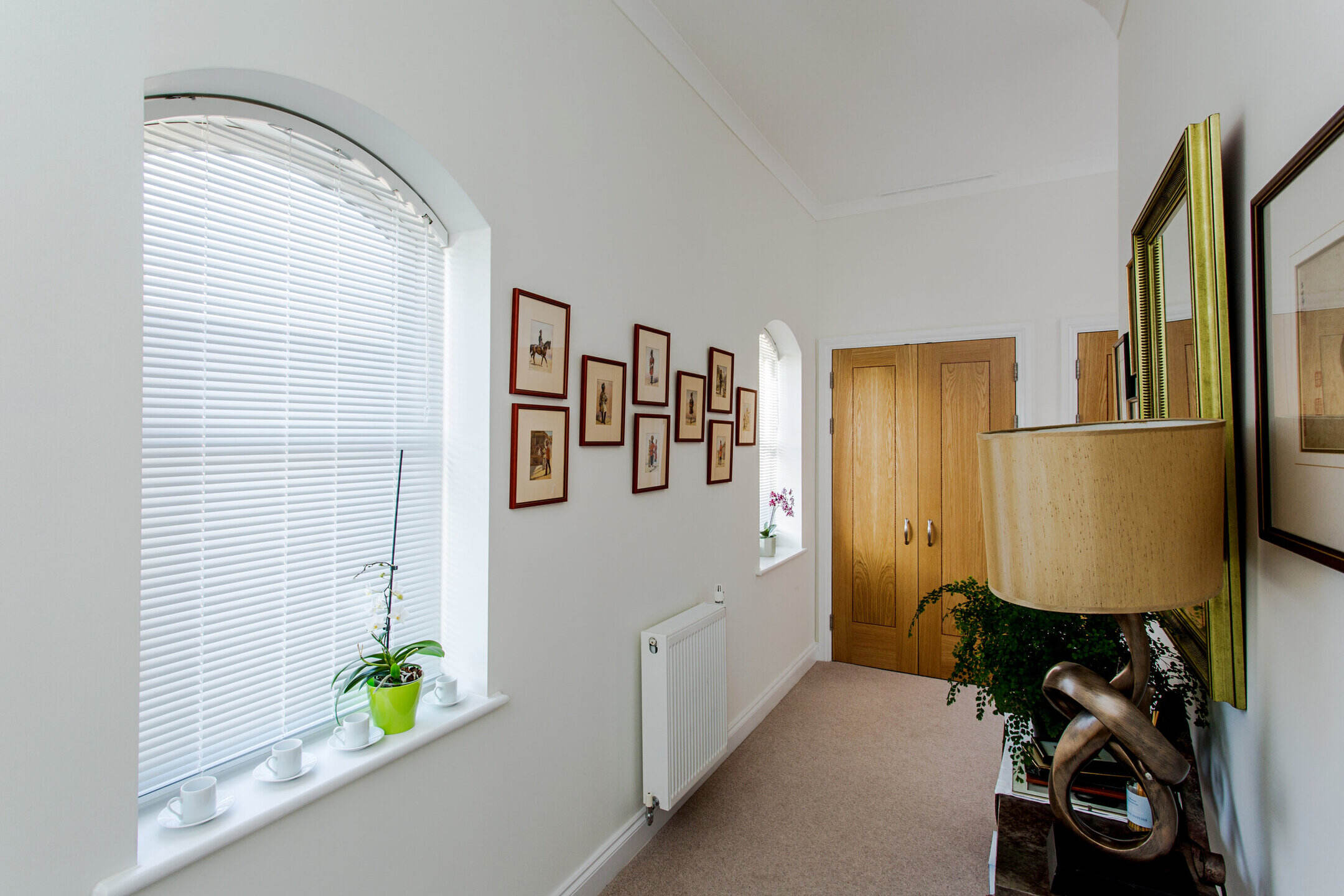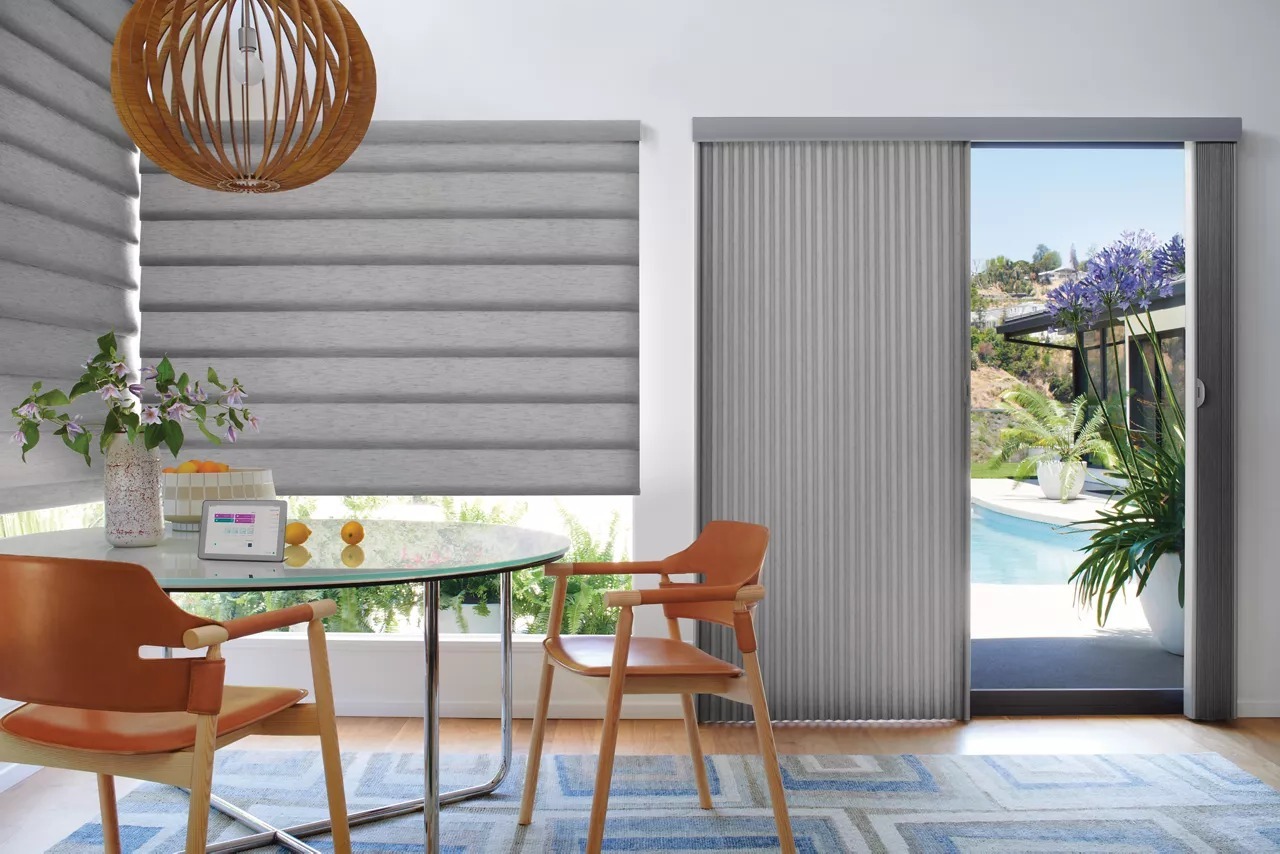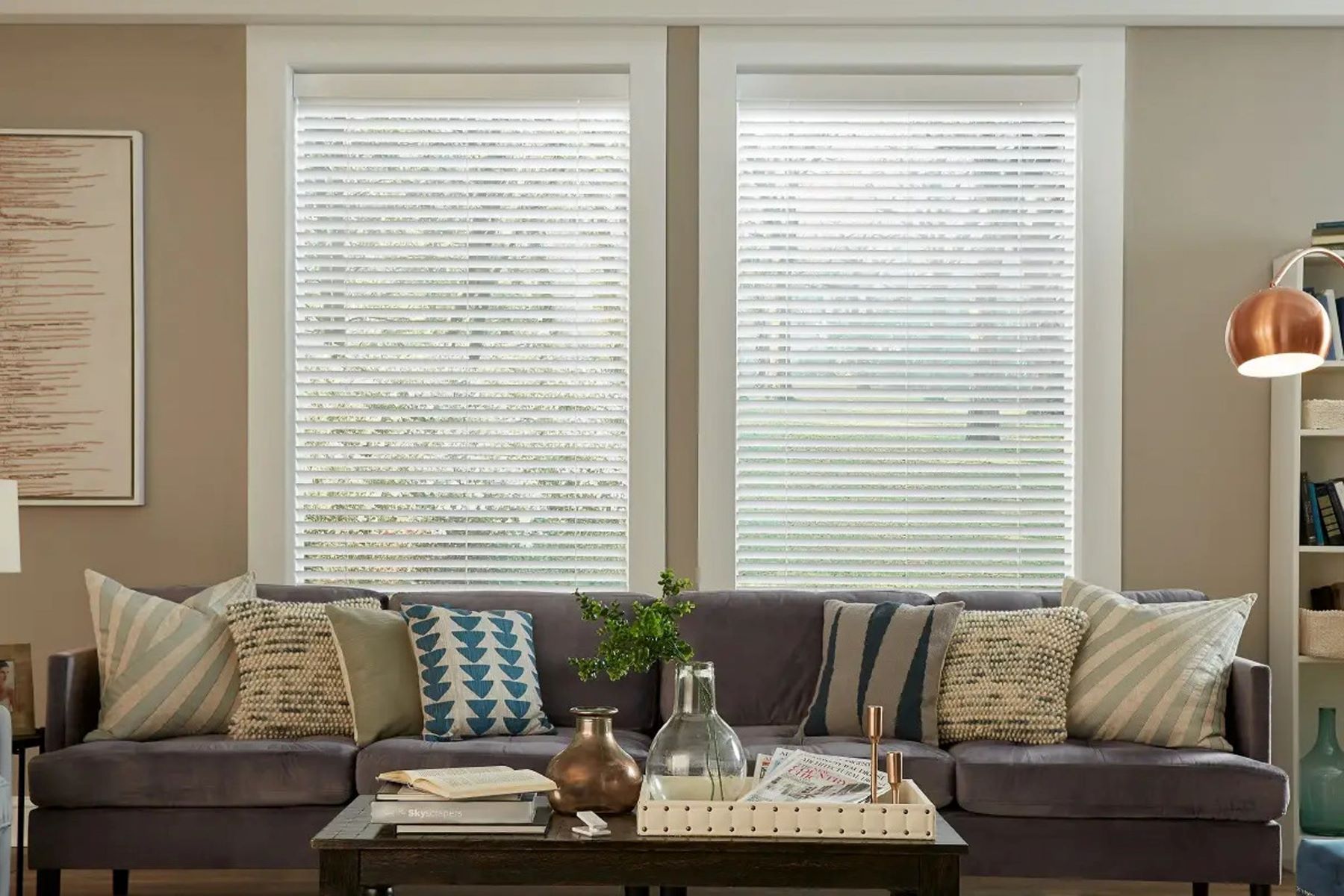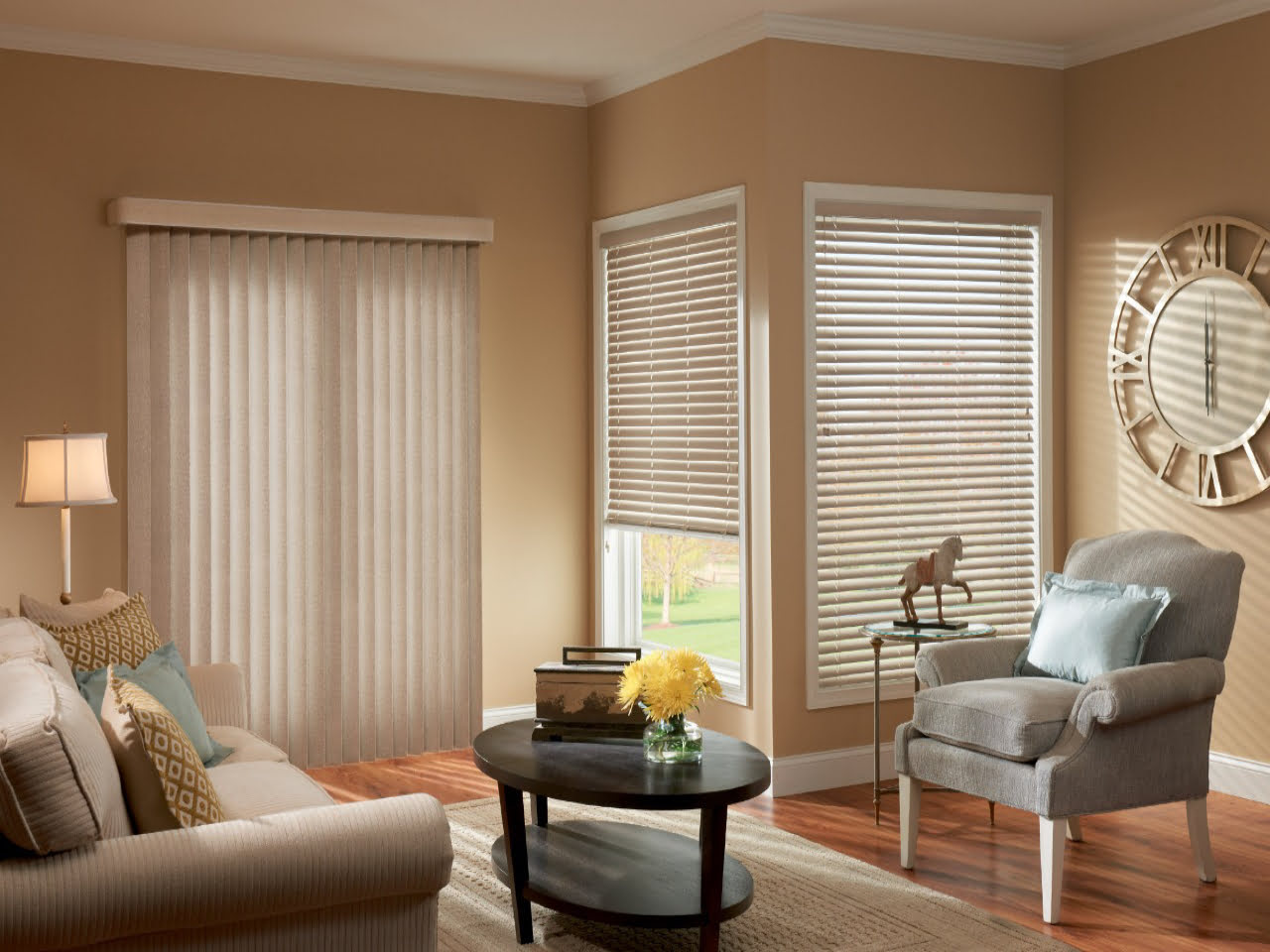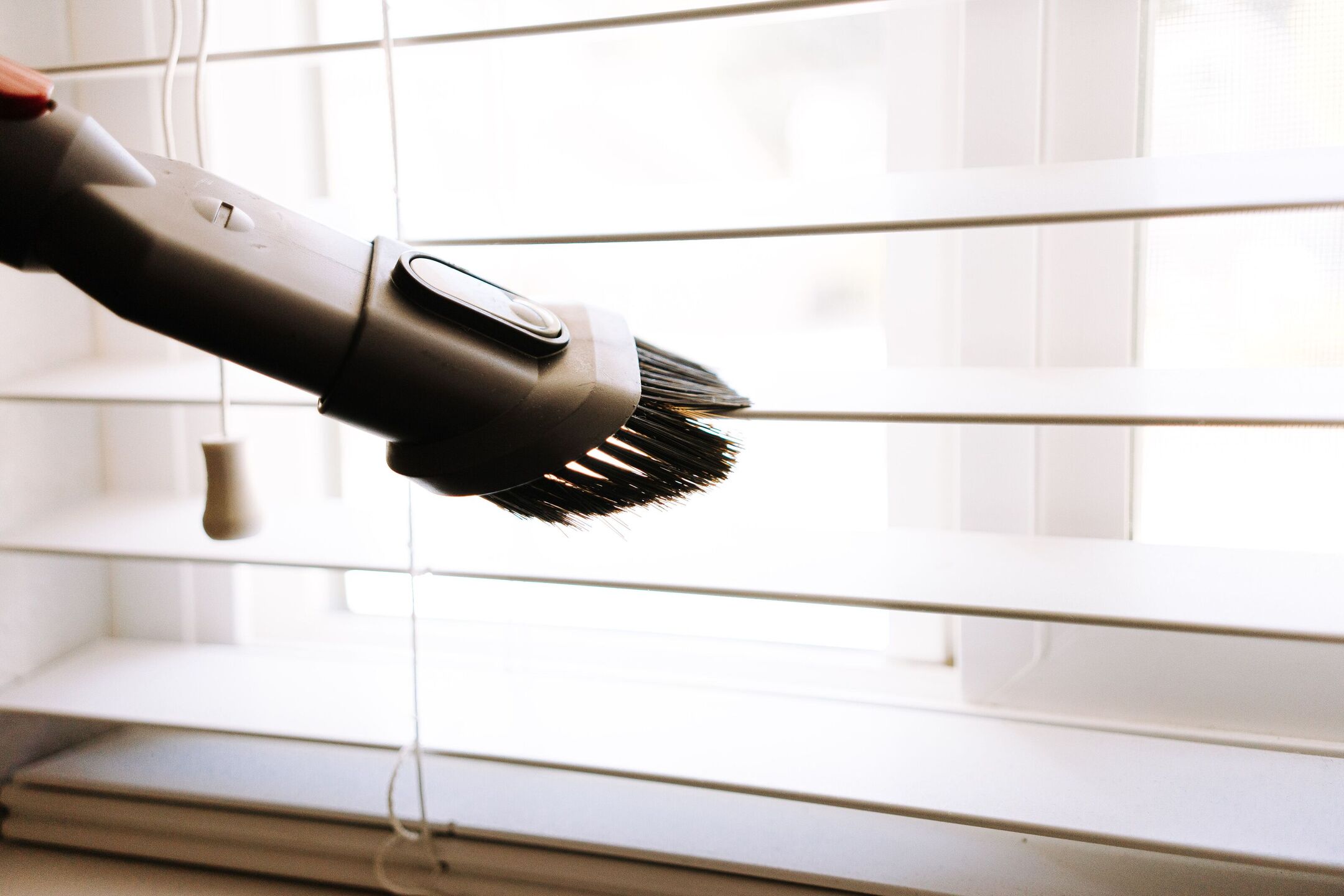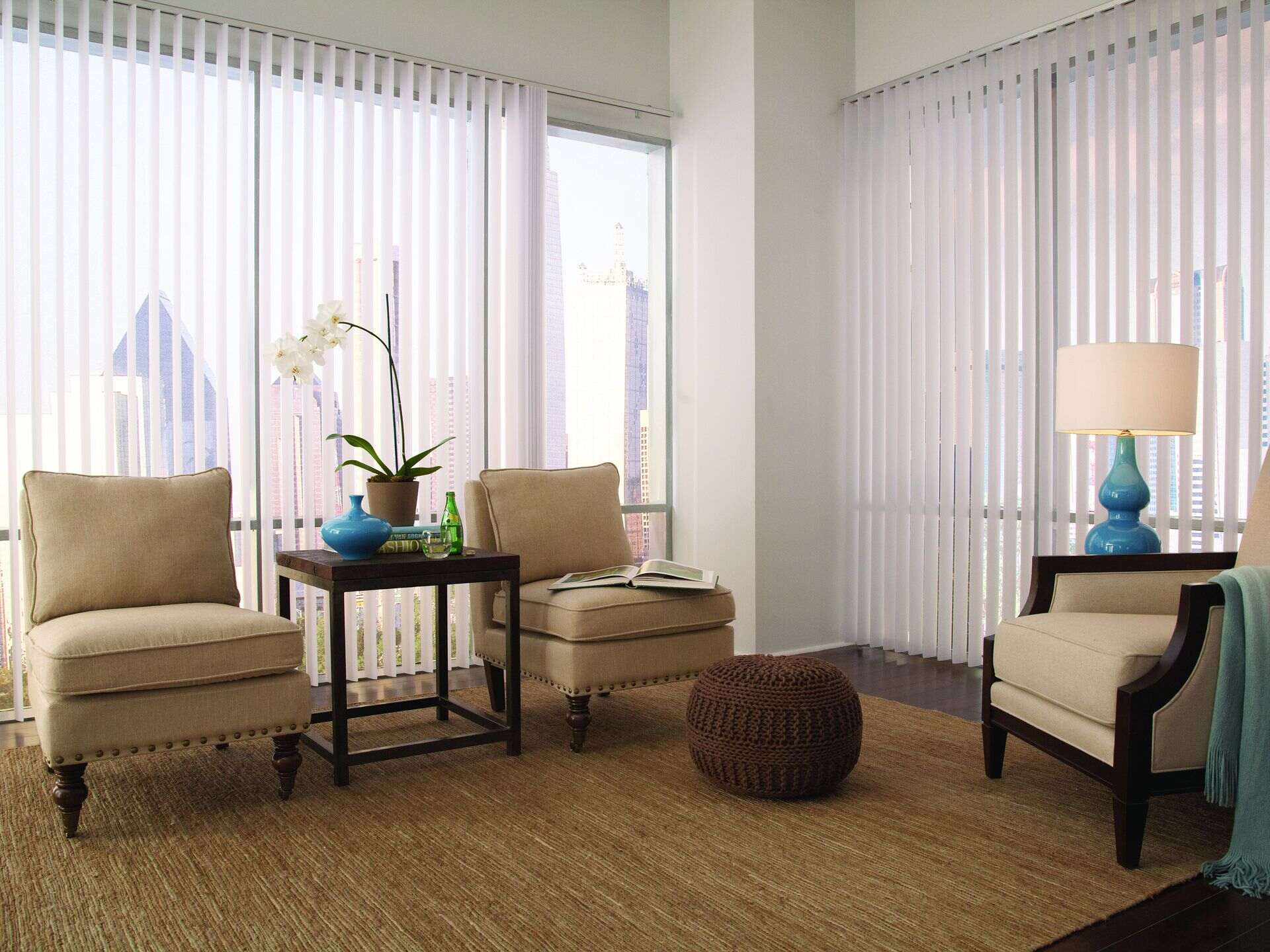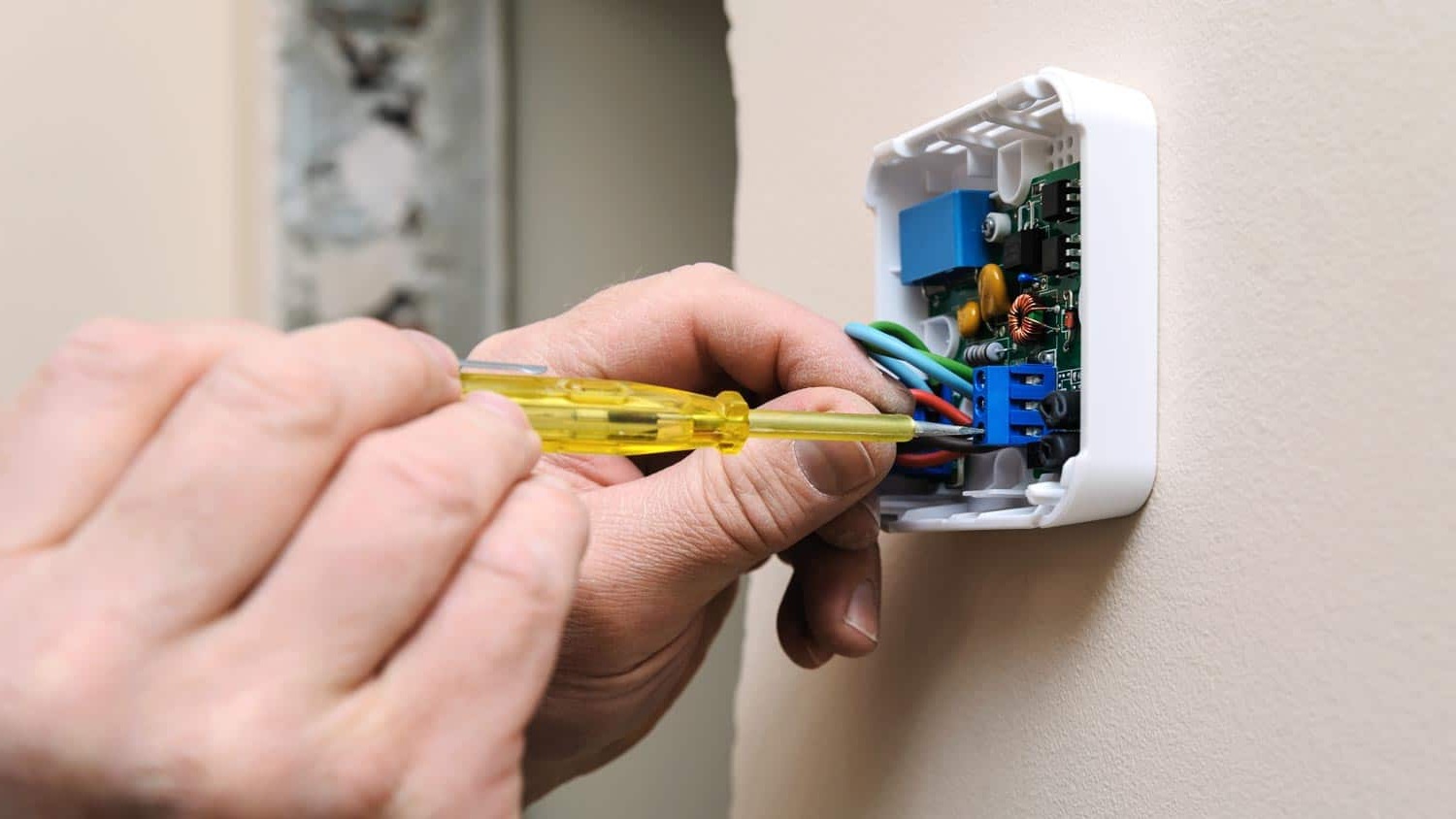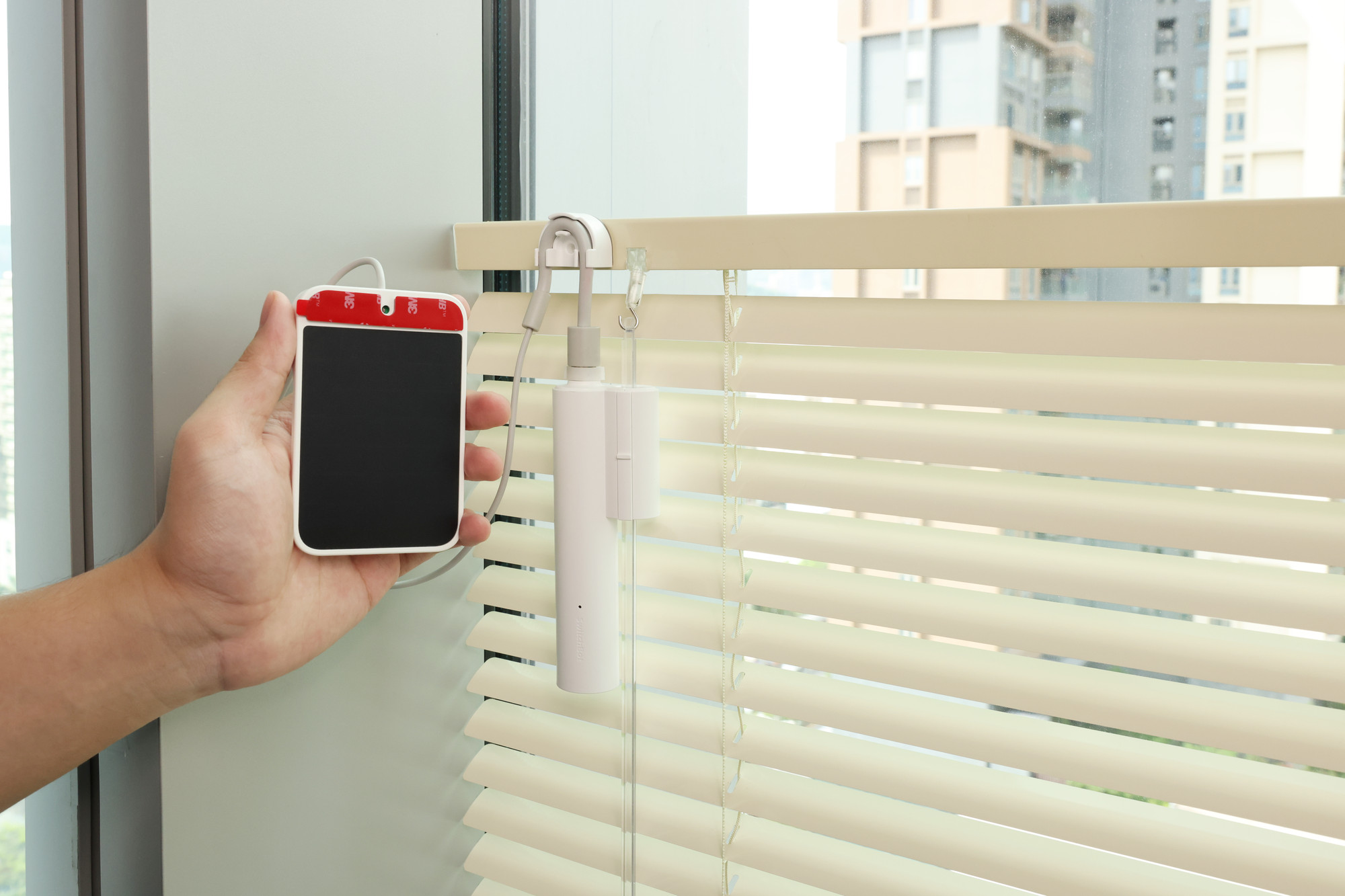

Articles
How To Make Your Blinds Smart
Modified: September 1, 2024
Discover how to make your blinds smart with these informative articles. Learn about the latest technologies and step-by-step guides to upgrade your home automation.
(Many of the links in this article redirect to a specific reviewed product. Your purchase of these products through affiliate links helps to generate commission for Storables.com, at no extra cost. Learn more)
Introduction
Welcome to the world of smart blinds! In today’s technologically advanced era, even the most basic household items are getting a digital makeover, and blinds are no exception. Smart blinds, also known as motorized blinds, offer a convenient and modern way to control the amount of light and privacy in your home with just a few taps on your smartphone or a voice command.
Smart blinds are designed to seamlessly integrate into your smart home ecosystem, offering a range of features that go beyond traditional blinds. With the ability to connect to your home automation system, they can be a valuable addition to enhance your comfort, convenience, and energy efficiency.
Imagine waking up in the morning and having your blinds automatically open to let in the gentle morning light, or being able to adjust the blinds remotely while you’re away to give the impression that someone is home. These are just a few examples of the possibilities that smart blinds offer.
In this article, we will guide you through the process of making your blinds smart. We’ll cover everything from choosing the right smart blinds for your needs, to setting them up, connecting them to your home automation system, and controlling them through various methods. We’ll also address common troubleshooting issues and important security and privacy considerations.
So, get ready to discover the world of smart blinds and transform your home into a smart haven of convenience and style.
Key Takeaways:
- Embrace the convenience, energy efficiency, and modern aesthetics of smart blinds by choosing the right type, setting them up seamlessly, and integrating them into your home automation system for effortless control and automation.
- Prioritize the security and privacy of your smart blinds by implementing strong passwords, updating firmware, and safeguarding personal information, ensuring a safe and private smart home experience.
Read more: How To Make Your Own Blinds
What are smart blinds?
Smart blinds, also known as motorized blinds, are window coverings with built-in technology that allows you to control their movement and position through remote commands or automation. They are designed to offer convenience, energy efficiency, and enhance the overall aesthetics of your home.
These blinds can either be operated using a smartphone app, voice commands, or integrated into your home automation system for seamless control along with other smart devices.
Benefits of smart blinds:
- Convenience: One of the main advantages of smart blinds is the convenience they offer. With just a few taps on your smartphone or a simple voice command, you can adjust the blinds’ position, open or close them, and set them to specific levels. This eliminates the need for manual adjustment, making your daily routine effortless.
- Energy Efficiency: Smart blinds help optimize energy usage by maximizing natural light and reducing reliance on artificial lighting. They can be programmed to automatically adjust throughout the day based on the position of the sun, helping regulate room temperature and reducing the load on your heating or cooling systems.
- Privacy and Security: With smart blinds, you have precise control over the level of privacy you desire at any given moment. Whether you want full coverage or want to let in natural light while maintaining privacy, you can easily adjust the blinds accordingly. Additionally, when you’re away from home, you can program the blinds to open and close at regular intervals, giving the appearance that someone is inside to deter potential intruders.
- Improved Sleep Quality: Smart blinds can help create a conducive environment for a good night’s sleep. By programming them to gradually close in the evenings, you can block out streetlights and other sources of external light that might disrupt your sleep. In the mornings, you can schedule the blinds to gently open, allowing natural light to wake you up naturally.
- Aesthetics: Motorized blinds eliminate the need for bulky cords or chains, creating a clean and sleek look. This minimalist design not only enhances the overall aesthetic appeal of your windows but also reduces the risk of accidents, especially in households with pets or young children.
With these benefits, it’s no wonder that smart blinds are becoming increasingly popular among homeowners who seek a convenient and modern way to control their window coverings.
Choosing the right smart blinds
When it comes to choosing the right smart blinds for your home, there are several factors to consider. From the type of blinds to compatibility with your home automation system, understanding these factors will help you make an informed decision. Let’s take a closer look:
Factors to consider:
- Window Size and Type: Measure your windows accurately to ensure that the smart blinds you choose will fit properly. Consider the type of window you have, such as standard windows, large windows, or specialty shapes, and choose blinds that are suitable for those specifications.
- Functionality and Control: Consider how you want to control your smart blinds. Do you prefer a smartphone app, voice control, or integration with your existing home automation system? Ensure that the smart blinds you choose offer the control options that align with your preferences.
- Power Source: Smart blinds can be powered either by batteries or by being hardwired into your home’s electricity supply. Consider the pros and cons of each option. Battery-powered blinds offer flexibility and easier installation, while hardwired blinds eliminate the need for battery replacements.
- Budget: Set a budget for your smart blinds project. Take into account the cost of the blinds themselves, any required accessories or equipment, and the installation charges if applicable. It’s important to find a balance between your desired features and functionalities and your budget constraints.
- Integration: If you already have a home automation system in place, ensure that the smart blinds you choose are compatible and can be seamlessly integrated. Check if they support popular protocols such as Zigbee, Z-Wave, or Wi-Fi for smooth connectivity with your existing smart devices.
Different types of smart blinds:
There are various types of smart blinds available in the market. Here are a few popular options:
- Roller Blinds: Roller blinds are a classic and versatile option. They consist of a single piece of fabric that rolls up and down, allowing you to control the amount of light and privacy. Motorized roller blinds are easy to install and offer a sleek and streamlined look.
- Vertical Blinds: Vertical blinds are ideal for large windows and sliding glass doors. They feature vertical slats that can be tilted or drawn open or closed. Motorized vertical blinds offer effortless adjustment and a modern touch to your space.
- Venetian Blinds: Venetian blinds are horizontal slatted blinds that can be tilted and raised or lowered. They provide precise control over light and privacy. Motorized venetian blinds add convenience and a contemporary flair to your windows.
- Pleated Blinds: Pleated blinds have a pleated fabric construction that can be opened or closed. They are an excellent choice for adding texture and softness to your windows. Motorized pleated blinds offer ease of use and a stylish appearance.
- Honeycomb Blinds: Honeycomb blinds, also known as cellular blinds, have a unique cellular structure that provides insulation and energy efficiency. They can be opened from the top or bottom and offer noise reduction and privacy. Motorized honeycomb blinds combine functionality with a modern design.
Consider your personal preferences, window requirements, and the style of your home when choosing the type of smart blinds that best suit your needs.
By considering these factors and exploring the different types of smart blinds available, you can make an informed decision and ensure that your chosen blinds seamlessly integrate into your smart home setup.
Setting up your smart blinds
Setting up your smart blinds requires a few essential steps to ensure proper installation and integration with your home automation system. Let’s explore the required equipment and the general installation process:
Required equipment:
- Smart Blinds: Purchase the smart blinds of your choice, ensuring that they are suitable for your window size and type.
- Mounting Hardware: Check if the smart blinds come with the necessary mounting hardware. If not, you may need to purchase it separately, depending on the type of blinds and your window frame.
- Screwdriver and Power Drill: These tools will be needed to mount the blinds securely. Make sure you have the appropriate screwdriver (Phillips or flathead) and a power drill with the correct drill bits.
- Batteries or Power Adapter: If your smart blinds are battery-powered, ensure you have the correct batteries. If they are hardwired, make sure you have the appropriate power adapter and any necessary electrical wiring.
- Smartphone or Tablet: You will need a smartphone or tablet to download the manufacturer’s app for controlling your smart blinds.
Installation process:
Follow these general steps to install your smart blinds:
- Prepare the blinds: Unbox the smart blinds and familiarize yourself with their components and instructions. If necessary, assemble any parts according to the manufacturer’s guidelines.
- Mount the brackets: Determine the optimal placement of the mounting brackets on your window frame or wall. Use a level to ensure the brackets are straight. Mark the screw hole positions and drill pilot holes if required. Secure the brackets with screws.
- Attach the blinds: Depending on the type of smart blinds, attach them to the mounting brackets using the provided hooks, clips, or other attachment mechanisms. Double-check that the blinds are securely attached and aligned properly.
- Connect the power source: If your smart blinds are battery-powered, insert the batteries. If they are hardwired, follow the manufacturer’s instructions to connect the power adapter to an electrical outlet or wiring. Ensure that the power source is functioning correctly.
- Download the app: Go to the app store on your smartphone or tablet and download the manufacturer’s app for controlling your smart blinds. Create an account or sign in if prompted.
- Pair the blinds: Follow the app’s instructions to pair your smart blinds with your device. This may involve pressing specific buttons on the blinds or using the app to scan a QR code or enter a unique identifier.
- Test the blinds: Once the blinds are paired, use the app to test their movement and functionality. Ensure that they respond accurately to your commands and smoothly open and close without any issues.
- Finalize the settings: Customize the settings and preferences in the app, such as adjusting the blinds’ movement speed or setting up schedules. Explore any additional features offered by the app, such as voice control integration or automation options.
Keep in mind that the specific installation process may vary depending on the brand and model of your smart blinds. Always refer to the manufacturer’s instructions for precise guidance during installation.
By following these steps and taking the required precautions, you can successfully set up your smart blinds and prepare them for seamless control and automation.
Read more: How To Make Blackout Blinds
Connecting smart blinds to your home automation system
Connecting your smart blinds to your home automation system enhances their functionality and allows you to control them alongside other smart devices in your home. Here, we will explore the compatibility options and integration steps to seamlessly integrate your smart blinds with your home automation system:
Compatibility options:
Before proceeding with the integration, ensure that your smart blinds are compatible with your home automation system. Common compatibility options include:
- Zigbee: Zigbee is a wireless communication protocol used for home automation. If your smart blinds support Zigbee, check if your home automation system is also Zigbee-compatible.
- Z-Wave: Z-Wave is another popular wireless protocol for home automation. If your smart blinds or your home automation system support Z-Wave, they can communicate with each other.
- Wi-Fi: Many smart blinds connect to your home network via Wi-Fi. If your home automation system can connect to Wi-Fi, you can integrate your smart blinds accordingly.
- Smart Hub: Some home automation systems require a smart hub to connect and control various devices. Check if your smart blinds are compatible with the specific smart hub supported by your automation system.
- Manufacturer Integration: Certain smart blinds may offer direct integration with specific home automation systems or smart assistants like Amazon Alexa or Google Assistant. This can simplify the integration process by eliminating the need for additional hubs or protocols.
Integration steps:
Follow these general steps to connect your smart blinds to your home automation system:
- Ensure proper setup: Make sure your smart blinds are properly installed, powered, and connected to the manufacturer’s app on your smartphone or tablet.
- Identify your home automation system: Determine the type and brand of your home automation system. This information will be necessary to locate the appropriate integration options and steps.
- Access the home automation system’s app or interface: Open the app or interface of your home automation system on your smartphone, tablet, or computer. Sign in to your account if required.
- Locate the device or device integration settings: Look for options related to adding or integrating devices within the app or interface. This may be labeled as “Devices,” “Add Device,” “Integrations,” or something similar.
- Follow the integration steps: Depending on the specific home automation system, you may need to follow a guided setup process or manually search for the smart blinds within the app. This typically involves putting the smart blinds in pairing mode and allowing the automation system to discover and connect to them.
- Test the connection: Once the integration is complete, use the automation system’s app or interface to confirm that the smart blinds are successfully connected and controllable from within the system. Test their movement and functionality to ensure proper communication.
- Customize settings and automation: Explore the options within the home automation system to customize the behavior of your smart blinds. This may include creating schedules, setting up routines, or linking them to other devices or sensors for automation purposes.
Remember, the specific integration steps may vary depending on your home automation system and the brand of your smart blinds. Consult the manufacturer’s instructions and the documentation provided by your home automation system for detailed guidance during the integration process.
By successfully connecting your smart blinds to your home automation system, you’ll have the ability to control and automate them alongside other smart devices, enhancing the level of comfort, convenience, and energy efficiency in your smart home environment.
Controlling your smart blinds
Controlling your smart blinds is incredibly convenient and easy thanks to modern technology. With just a few taps on a smartphone app or a simple voice command, you can adjust your blinds to your desired position. Let’s explore the two main methods of controlling smart blinds: using a smartphone app and voice control.
Read more: How To Make Roman Blinds
Using a smartphone app:
The most common way to control your smart blinds is through a dedicated smartphone app provided by the manufacturer. Here’s how it works:
- Download the app: Start by downloading the app specific to your smart blinds from the app store on your smartphone or tablet. Make sure to create an account or sign in if required.
- Pair the app with your smart blinds: Follow the instructions provided by the app to pair it with your smart blinds. This typically involves connecting to your blinds via Wi-Fi or using a QR code scanning process.
- Discover your blinds: Once your app is connected to your smart blinds, it will automatically detect and display them in the app’s interface. You may need to assign a room or name to each set of blinds for easier identification.
- Control your blinds: Use the app’s interface to open, close, or adjust the position of your blinds. Depending on the app and the features supported by your blinds, you may have the option to set specific positions or create customized presets.
- Explore additional features: Some apps offer advanced features such as scheduling, automation, or integration with other smart devices or services. Take the time to explore these options and customize your blinds’ behavior to fit your preferences and lifestyle.
Using a smartphone app gives you the flexibility to control your blinds from anywhere in your home, as long as you have a Wi-Fi or internet connection. You can also set up routines and schedules to automate the movement of your blinds throughout the day.
Voice control options:
Another convenient way to control your smart blinds is through voice commands. This method requires compatible smart speakers or virtual assistants such as Amazon Alexa or Google Assistant. Here’s how it works:
- Set up your virtual assistant: Start by setting up your virtual assistant device or speaker according to the manufacturer’s instructions. This typically involves connecting it to your home Wi-Fi network and linking it to your virtual assistant account.
- Enable the smart blinds skill: In the virtual assistant’s app or settings, enable the skill or integration specific to your smart blinds’ manufacturer. This will allow the virtual assistant to communicate and control your blinds.
- Discover your smart blinds: Ask your virtual assistant device or speaker to discover your smart blinds. This process may require issuing a specific voice command or following on-screen instructions.
- Control your blinds with voice commands: Once your smart blinds are discovered, you can use voice commands to control them. For example, you can say, “Hey Google, open the blinds in the living room,” or “Alexa, close all blinds in the house.”
- Explore advanced voice control: Depending on your virtual assistant and the capabilities of your smart blinds, you may be able to create routines, schedule blinds movement, or integrate them with other smart devices using voice commands. Check the manufacturer’s documentation or the virtual assistant’s app for more information.
Voice control offers a hands-free and intuitive way to control your smart blinds. It’s particularly useful when your hands are full or when you want to control multiple blinds simultaneously with a single command.
Whether you prefer using a smartphone app or voice control, both methods provide a convenient and user-friendly way to effortlessly adjust your smart blinds to your desired position. Choose the method that suits your preferences and enjoy the convenience of controlling your blinds with ease.
Automating your smart blinds
One of the major advantages of smart blinds is the ability to automate their operation. This allows you to set up schedules and routines, as well as utilize sensors to control the blinds based on certain conditions. Let’s explore how you can automate your smart blinds:
Creating schedules and routines:
Creating schedules and routines for your smart blinds ensures that they adjust automatically at specific times or under predetermined conditions. Here’s how you can set up schedules and routines:
- Schedule-based automation: Most smart blind apps or home automation systems allow you to create schedules. You can specify the time of day when you want your blinds to open, close, or adjust to a particular position. For example, you can set your blinds to open automatically in the morning and close in the evening.
- Routine-based automation: Routines are a series of actions that can be triggered by a single command or event. For example, you can create a routine that adjusts the blinds to a specific position when you say, “Good morning,” or when you leave the house for the day. This allows you to effortlessly control multiple smart devices, including your blinds, with a single interaction.
- Grouping blinds: If you have multiple sets of blinds in the same room or area, you can group them together in the app or automation system. This enables you to create synchronized schedules and routines for all the blinds in the group, ensuring they move in unison.
By setting up schedules and routines, you can automate the movement of your blinds, saving time and effort while ensuring they adjust according to your daily routine and preferences.
Read more: How To Make Wood Blinds
Utilizing sensors for automation:
Smart blinds can also be integrated with sensors to trigger their movement based on specific conditions. Here are a few examples:
- Light sensors: Light sensors can detect the level of ambient light in a room. By connecting your smart blinds to light sensors, you can configure them to open when the room reaches a certain level of brightness or close when the light intensity exceeds a specified threshold. This allows you to maximize natural lighting and regulate the amount of glare or heat entering the room.
- Temperature sensors: Temperature sensors can monitor the temperature in a room. You can program your smart blinds to close when the temperature rises above a certain point to block out excessive heat or to open when the temperature drops to let in natural ventilation. This helps maintain a comfortable environment while potentially reducing energy consumption.
- Occupancy sensors: Occupancy sensors detect the presence or absence of people in a room. By integrating your smart blinds with occupancy sensors, you can automate the blinds to close when no one is present in the room for a specified period. This adds an extra layer of security and energy savings by ensuring that the blinds are not left open unnecessarily.
- Time-based automation: In addition to schedules, you can also utilize time-based automation by integrating your smart blinds with the local sunset and sunrise times. This allows your blinds to adjust automatically based on the changing daylight hours, ensuring that they align with natural lighting patterns throughout the year.
By utilizing sensors for automation, you can enhance the functionality of your smart blinds, making them more responsive and efficient in adapting to environmental conditions.
Automating your smart blinds through schedules, routines, and sensor integration provides you with effortless control and energy efficiency. Take advantage of these features to enhance your smart home experience and enjoy the benefits of a seamlessly automated environment.
Troubleshooting common issues
While smart blinds offer convenience and automation, there may be times when you encounter common issues that require troubleshooting. Here are a couple of common issues that you might experience with your smart blinds and some troubleshooting tips:
Connectivity problems:
One common issue with smart blinds is connectivity problems, where the blinds fail to connect or communicate properly with your smartphone app or home automation system. If you experience connectivity issues, consider the following troubleshooting steps:
- Check Wi-Fi signal: Make sure your smart blinds are within range of your Wi-Fi router and that your Wi-Fi signal is strong. Weak or inconsistent Wi-Fi can cause connectivity problems. If necessary, move your router closer to the blinds or consider using a Wi-Fi range extender.
- Restart your smart blinds: Sometimes, a simple restart can resolve connectivity issues. Power off your smart blinds, wait for a few seconds, and then power them back on. This can help reset the connection and establish a fresh connection with your app or automation system.
- Restart your home automation system: If you are using a home automation system, restart the system to refresh the connection. In some cases, the system may need a reset to reconnect with your smart blinds properly.
- Check app permissions and settings: Ensure that the app you are using to control your blinds has the necessary permissions and settings enabled. Sometimes, app updates or changes to your device’s settings can affect the app’s connectivity. Verify that the app has the required permissions, such as accessing your location or Wi-Fi network.
- Update firmware or app version: Check if there are any firmware updates available for your smart blinds or updates for the app. Outdated firmware or app versions can sometimes lead to connectivity issues. Update the firmware or app to the latest version provided by the manufacturer.
- Reset and re-pair: As a last resort, you may need to reset your smart blinds to their factory settings and re-pair them with your app or automation system. Consult the manufacturer’s instructions for detailed steps on how to perform a reset and re-pair process.
By following these troubleshooting steps, you can often resolve connectivity problems and ensure smooth communication between your smart blinds and the controlling devices.
Calibration and alignment difficulties:
Another common issue with smart blinds is calibration and alignment difficulties. This may occur when the blinds fail to open, close, or position themselves accurately. Here are a few troubleshooting tips to address this issue:
- Double-check installation: Ensure that your smart blinds are installed correctly and securely. Loose installation can affect the alignment and movement of the blinds. Tighten any screws or brackets as needed.
- Calibrate your blinds: Some smart blind apps or automation systems offer calibration features. Follow the instructions provided in the app or system to recalibrate your blinds. This process will help set the open and closed positions accurately.
- Check for obstructions: Check if there are any obstructions, such as furniture or window treatments, preventing the blinds from moving freely. Clear any obstructions that may hinder the movement or alignment of the blinds.
- Adjust the settings: Explore the settings in the app or automation system to fine-tune the movement of your blinds. You may find options to adjust the speed or position settings to achieve the desired alignment and movement.
- Consult manufacturer’s support: If you have tried the troubleshooting steps above and continue to experience calibration and alignment difficulties, reach out to the manufacturer’s support. They can provide specific guidance tailored to your smart blinds model and address any underlying issues.
By conducting these troubleshooting steps, you can often resolve calibration and alignment problems and ensure that your smart blinds operate smoothly and accurately.
Remember that specific troubleshooting steps may vary depending on the brand and model of your smart blinds. Always refer to the manufacturer’s instructions and seek their support if needed.
Read more: Who Makes Bali Blinds
Security and privacy considerations
As with any smart device, it’s important to prioritize the security and privacy of your smart blinds. Implementing proper measures can help protect your blinds from hacking and safeguard your personal information. Here are some key considerations:
Protecting your smart blinds from hacking:
Smart blinds, like any connected device, may be vulnerable to hacking if not properly secured. To enhance the security of your smart blinds, follow these practices:
- Use strong, unique passwords: Create strong, unique passwords for your smart blinds’ app, home automation system, and any associated accounts or devices. Avoid using easily guessable passwords and consider using a password manager to securely store and manage your passwords.
- Update the firmware: Regularly check for firmware updates provided by the manufacturer and apply them promptly. Firmware updates often include security patches and bug fixes that can help protect your smart blinds from known vulnerabilities.
- Enable two-factor authentication: If your smart blinds’ app or associated accounts support two-factor authentication, enable it. Two-factor authentication adds an extra layer of security by requiring a second verification method, such as a unique code sent to your mobile device, when accessing your account.
- Secure your home network: Protect your home network by setting up a strong Wi-Fi password and enabling network encryption (such as WPA2). Regularly review your network security settings and ensure that unauthorized devices are not connected to your network.
- Update your connected devices: Keep your smartphone, tablet, or any other devices used to control your smart blinds updated with the latest security patches and software updates. Updated devices are less likely to be vulnerable to security breaches.
- Disable unnecessary features: Review the features and settings of your smart blinds’ app or home automation system and disable any unnecessary functionality that could pose a security risk. For example, if your blinds do not require remote access, consider disabling that feature.
Safeguarding personal information:
In addition to securing your smart blinds against hacking, it’s essential to protect your personal information. Follow these guidelines to safeguard your privacy:
- Review privacy policies: Read the privacy policies of the smart blinds’ manufacturer, app, and associated services. Understand how your data will be collected, used, and shared. Choose devices and services from reputable manufacturers who prioritize privacy protection.
- Minimize data sharing: Be cautious about sharing unnecessary personal information when setting up your smart blinds or using their associated apps. Provide only the essential information required for their proper functioning.
- Secure access to your devices and accounts: Use strong, unique passwords for all your accounts and devices. When possible, enable additional security features such as biometric authentication (e.g., fingerprint or facial recognition) to further protect access to your devices.
- Regularly review app permissions: Periodically review the permissions granted to the app used to control your smart blinds. Disable any unnecessary permissions that could potentially access sensitive information on your device.
- Secure your physical space: Prevent unauthorized physical access to your smart blinds by ensuring that your home is adequately secured with locks and alarms. Additionally, be cautious about sharing access to your smart blinds with untrusted individuals.
- Consider a separate IoT network: Set up a separate network, specifically for your smart devices, to isolate them from your main home network. This can help prevent potential unauthorized access to your sensitive data and devices.
By following these security and privacy considerations, you can help protect your smart blinds from hacking attempts and safeguard your personal information, ensuring a safe and private smart home experience.
Conclusion
Congratulations on exploring the world of smart blinds and learning how to make your blinds smart! By integrating smart blinds into your home, you can enjoy the convenience, energy efficiency, and enhanced aesthetics they offer. From controlling your blinds with a smartphone app to utilizing voice commands for hands-free operation, the possibilities are endless.
Throughout this article, we’ve covered important topics such as choosing the right smart blinds, setting them up, connecting them to your home automation system, controlling them through various methods, automating their movement, troubleshooting common issues, and ensuring security and privacy.
Remember to consider factors such as window size and type, functionality, power sources, budget, and integration compatibility when choosing your smart blinds. Take the time to properly install and set them up, ensuring a secure and seamless connection with your smartphone app or home automation system.
Explore the different control options available, such as using a smartphone app or employing voice commands with virtual assistants, to effortlessly adjust your blinds to your desired position and create schedules or routines for automation.
In the event of any common issues, such as connectivity problems or calibration difficulties, follow the troubleshooting tips provided to resolve them effectively. Prioritize the security of your smart blinds by implementing strong passwords, updating firmware, enabling two-factor authentication, and securing your home network. Safeguard your personal information by reviewing privacy policies, minimizing data sharing, and regularly reviewing app permissions.
By taking these steps and considering the recommendations outlined in this article, you can make the most of your smart blinds and enjoy the benefits they bring to your home. Embrace the convenience, style, and energy efficiency that come with smart blinds, and transform your living space into a truly smart and comfortable haven.
So, go ahead and embark on your journey to make your blinds smart. Experience the future of window coverings and enjoy the many advantages they offer. Get ready to control your blinds with just a tap on your smartphone or a simple voice command, adding a touch of modernity and convenience to your everyday life.
Frequently Asked Questions about How To Make Your Blinds Smart
Was this page helpful?
At Storables.com, we guarantee accurate and reliable information. Our content, validated by Expert Board Contributors, is crafted following stringent Editorial Policies. We're committed to providing you with well-researched, expert-backed insights for all your informational needs.
